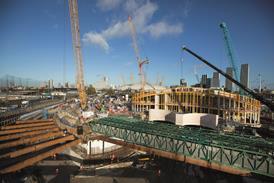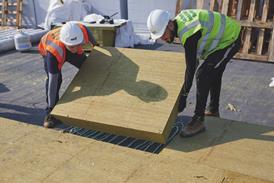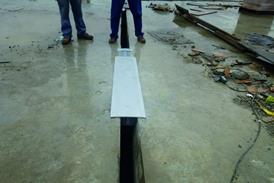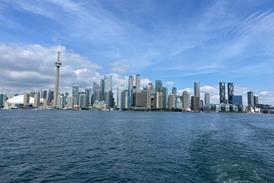- News
Regulations latest
All the latest updates on building safety reform
- Focus
- Comment
- Data
- Programmes
- CPD
- Events
- Jobs
- Subscribe
- Building Boardroom
Cost model: Low carbon frames

Structural frames are one of the biggest contributors to embodied carbon, but issues with data quality have made tackling this difficult – until now

01 / Introduction
As the global population rises and the built environment grows to accommodate it, the UN estimates that the construction industry accounts for 38% of global energy-based carbon emissions.
Operational carbon emissions have dropped significantly in recent years, in part because of better technology creating energy efficiencies – but also because both government and industry have taken operational carbon emissions seriously. The UK Emissions Trading Scheme for energy-intensive industries, for example, essentially assigns a price to operational carbon.
By contrast, embodied carbon is harder to quantify and has suffered from a lack of consistent benchmarking, research and data. Data challenges weaken the government’s ability to set informed, regulation-backed reduction targets – but this will inevitably change, as embodied carbon’s share of a building’s total carbon output expands. According to the UK Green Building Council (UKGBC), for new buildings embodied emissions from construction can account for up to half of the carbon impacts associated with the building over its lifecycle.
Reducing a project’s embodied carbon footprint is usually a desirable objective – clients are undoubtedly leading the way – but too often reduction potential is restricted due to cost constraints and a traditional, somewhat siloed approach to developing the initial conceptual designs. Finding optimal cost and carbon solutions requires the most carbon-intensive elements of a building to be centre stage at the outset.
Could the industry now be at a turning point?
Read more…
This is PREMIUM content, available to subscribers only
You are not currently logged in. Subscribers may LOGIN here.
SUBSCRIBE to access this story

SUBSCRIBE for UNLIMITED access to news and premium content
A subscription will provide access to the latest industry news, expert analysis & comment from industry leaders, data and research - including our popular annual league tables. You will receive:
- Print/digital issues delivered to your door/inbox
- Unlimited access to building.co.uk including our archive
- Print/digital supplements
- Newsletters - unlimited access to the stories behind the headlines
Subscribe now
Get access to premium content subscribe today



















